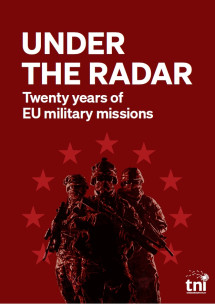GDAMS Healthcare Not Warfare Infographic
Here’s our new infographic for the Global Day of Action on Military Spending -GDAMS- 2020.
The COVID-19 pandemic crisis has shown the world where humanity’s priorities should lie. This major attack on people’s security across the world shames and discredits global military expenditures and prove them an outrageous waste and loss of opportunities. Given these circumstances, we consider essential to bring attention to the vast opportunity costs of the current levels of military spending, 1’82 trillion US$ a year (2018).

Infographic Healthcare Not Warfare GDAMSDownload
We believe crisis as the COVID-19 pandemic could and should only be addressed by supporting healthcare and other life-sustaining activities, not with military equipment and personnel prepared for war. The fact that military assets are being deployed during this crisis can be profoundly misleading: it doesn’t justify their bloated budgets, nor does it mean that they are solving this crisis. It shows quite the opposite: we need fewer soldiers, jets, tanks and aircraft carriers and more doctors, ambulances and hospitals.
Major reductions in military expenditure would free up resources not only to provide universal healthcare, but also to tackle climate and humanitarian emergencies, which also take thousands of lives every year, especially in countries of the Global South, which are suffering the worst consequences of an economic model that has been imposed upon them. It would also allow us to provide appropriate funding to institutions that work for human and common security, particularly the United Nations and its agencies.
Transferring resources to fund healthcare for all and climate and humanitarian relief would help prevent this from happening again and bail out the most affected communities. These funding could definitively come from the military budget, which has been given preference by decision-makers for decades
Translations available in:
Spanish
Catalan
Italian version
Download it as a pdf here.
You can find the references of the infographic here.



